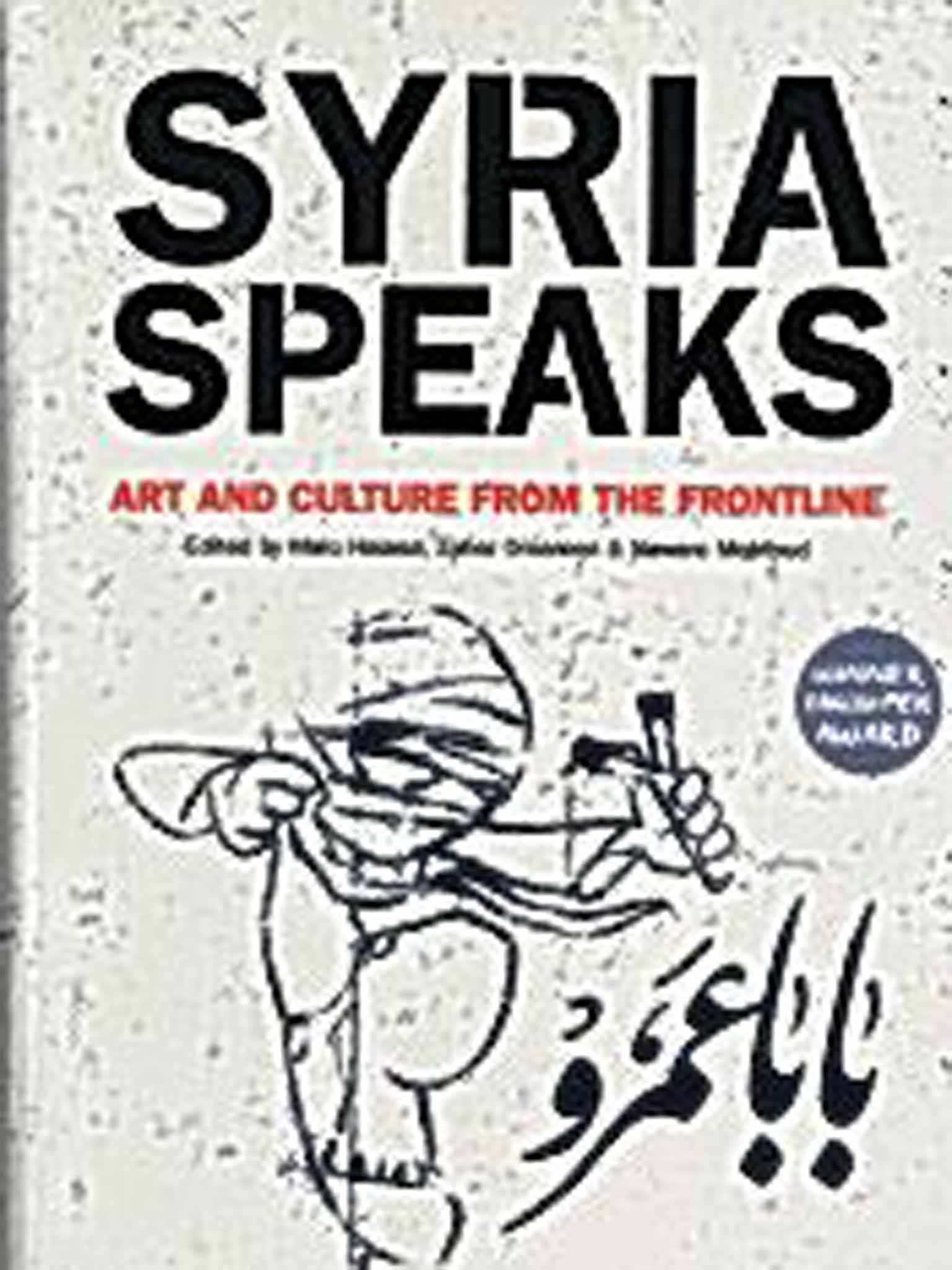Syria Speaks: Art and Culture from the Frontline, edited by Malu Halasa, Zaher Omareen, Nawara Mahfoud - book review: A moving testimony to dissidents fighting for democracy

Can finger-puppets strangle a bloodthirsty dictatorship? The dissident artists of the Masasit Mati group began to use the tiny caricatures who populate their satirical series Top Goon because they were easy to transport, and therefore to smuggle. An internet cult after the Syrian uprising started in earnest in 2011, with more than a million YouTube and Facebook hits, Top Goon mocked Bashar al-Assad and his henchmen in merciless Spitting Image style, with episodes such as "Who Wants to Kill a Million?" and "Skyping Putin".
Syria Speaks, an invaluable and deeply moving testimony to resistance in word and image, gathers work by more than 50 artists and writers over the entire range of modern media. Online platforms offer an especially fertile ground for protest against the barbarism of the regime. From the agitprop posters and stencils that came out of Deraa, a cradle of the revolution, to the politicised surrealism of artist Khaled Younes and poems, stories and memoirs by activists given a voice by the insurrection, this work clamours for liberty and turns its back not only on tyranny but on religious division.
Writer Samar Yazbek, now exiled in France, typically dreams of "a united Syria where the only sectarian belief is freedom". In his survey of revolutionary literature, the novelist Robin Yassin-Kassab mentions that Yazbek's reward from the regime for her literary courage was to be "walked through a display of meat-hooked and flayed torture victims". Other creative artists have joined those victims. The street "chanter" or rapper Ibrahim Qashoush, who led protests in Hama with his song "Come on, Bashar, Get Out!", was soon found dead with his throat cut.
In mid-2014, one reads and views these fragments of a fledgling secular, democratic culture not only in awe but also in sorrow. Violent sectarianism has returned – indeed, in a shrewd essay on Syria's frail "culture of citizenship", Hassan Abbas refers to an Assad plan to unleash "sectarian chaos". That chaos and the paradigm of "civil war" have enfeebled if not silenced the kind of art showcased so boldly here. Dissident intellectual Yassin al-Haj Saleh regrets that "the influence of culture has declined" since the rebellion began.
In any case, this anthology records and celebrates an extraordinary moment of liberated tongues and eyes. From amateur video-makers to working-class poets and photographers' collectives, art broke down the walls of the "huge cell" of Assad's Syria. After what Omar Alassad calls "the collapse of the fear barrier", a hundred flowers bloomed. Let's hope that they can flourish in the future.
Join our commenting forum
Join thought-provoking conversations, follow other Independent readers and see their replies
Comments